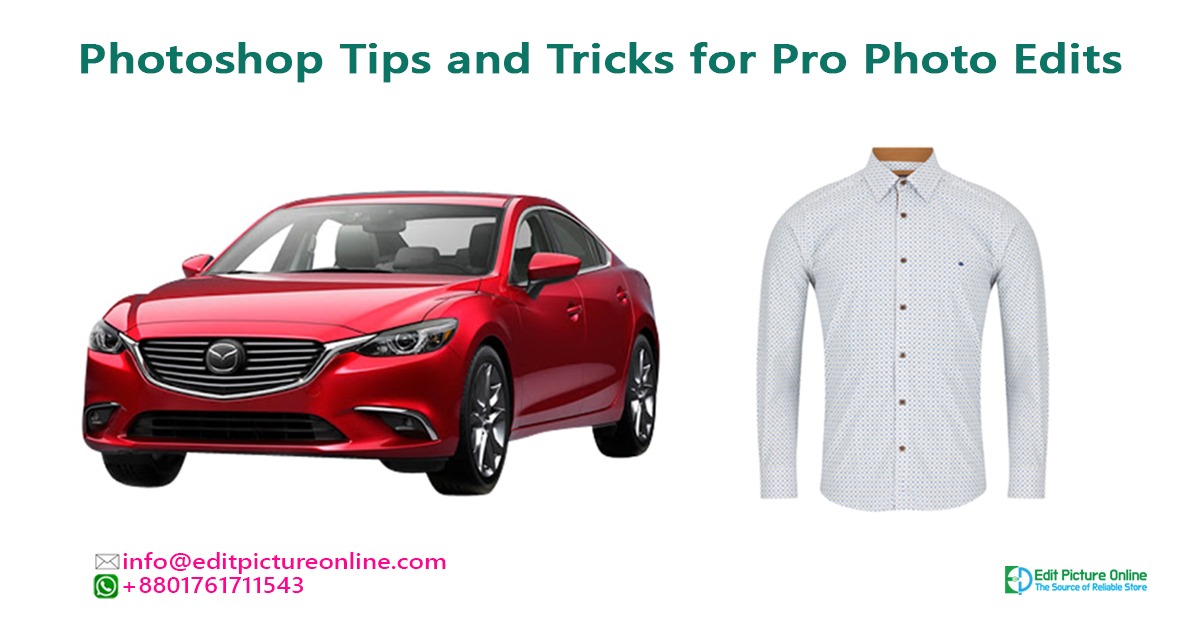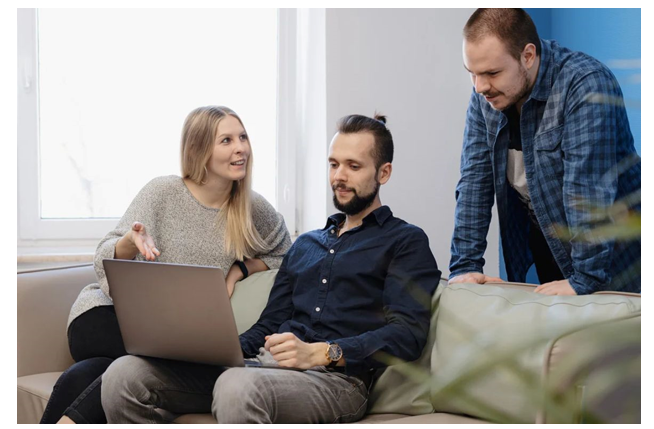Photoshop Tips and Tricks for Pro Photo Edits
Adobe Photoshop has long been the industry standard for professional photo editing. Whether you’re a seasoned pro or a new photographer, mastering Photoshop can take your images to the next level. In this article, we’ll explore essential tools, advanced techniques, and specific editing processes for ghost mannequin and car image editing. By the end, you’ll have a toolkit of pro level Photoshop skills to enhance your photo editing workflow.
Essential Photoshop Tools for Pro Edits
To achieve professional quality edits, you need to be familiar with Photoshop’s most powerful tools. Here are some essential tools every pro editor should master:
- Layers and Layer Masks: These are the foundation of non-destructive editing. Layers allow you to work on different elements of your image separately, while layer masks enable you to hide or reveal parts of a layer with precision.
- Adjustment Layers: These allow you to apply color and tonal adjustments without altering the original image data. Key adjustment layers include Levels, Curves, Hue/Saturation, and Color Balance.
- Clone Stamp and Healing Brush: These tools are crucial for retouching and removing unwanted elements from your images. The Clone Stamp copies pixels from one area to another, while the Healing Brush blends the sampled pixels with the surrounding area for a more natural look.
- Pen Tool: This versatile tool is essential for creating precise selections and paths. It’s particularly useful for complex cutouts and creating custom shapes.
- Brush Tool: With its extensive customization options, the Brush Tool is indispensable for detailed retouching, painting, and masking.
- Dodge and Burn Tools: These tools allow you to selectively lighten (dodge) or darken (burn) specific areas of your image, adding depth and dimension.
These tools will provide a solid foundation for tackling more advanced editing techniques and specific editing scenarios.
Ghost Mannequin Pro Editing
Ghost mannequin service, also known as invisible mannequin editing, is a technique commonly used in e-commerce product photography. It creates the illusion of a three-dimensional garment without the visible presence of a mannequin. Here’s a step-by-step process for achieving this effect:
- Prepare Your Images: You’ll need at least two images – one with the garment on the mannequin and another of the inside of the garment.
- Remove the Mannequin: Use the Pen Tool to create a precise selection around the garment. Create a new layer via copy (Ctrl/Cmd + J) with this selection.
- Clean Up the Edges: Use the Clone Stamp and Healing Brush tools to clean up any remaining mannequin parts or imperfections along the edges of the garment.
- Add the Inner Garment: Open the image of the garment’s inside. Use the Pen Tool to select the relevant part, copy it, and paste it into your main image as a new layer.
- Align and Blend: Position the inner garment layer correctly. Use Transform tools (Ctrl/Cmd + T) to resize and rotate as needed. Apply layer masks and use the Brush Tool to blend the edges seamlessly.
- Final Touches: Adjust the lighting and shadows to ensure consistency across all parts of the garment. Use Dodge and Burn tools to enhance the 3D appearance if necessary.
Car Image Editing Pro Editing
Car photography often requires specific car image editing service or techniques to make vehicles look their best. Here’s a pro approach to car image editing:
- Clean Up the Image: Remove any distractions or imperfections using the Clone Stamp and Healing Brush tools. Pay special attention to reflections in the car’s surface.
- Enhance the Paint: Use Adjustment Layers like Hue/Saturation and Selective Color to bring out the richness of the car’s paint. Be careful not to oversaturate.
- Sharpen Details: Apply selective sharpening to enhance the car’s edges and details. Use the High Pass filter on a separate layer set to Overlay blending mode for a natural sharpening effect.
- Dodge and Burn: Carefully apply Dodge and Burn techniques to enhance the car’s curves and create a more dramatic lighting effect.
- Color Grading: Use Gradient Map adjustment layers to apply a subtle color grade that complements the car’s color and the overall mood of the image.
- Background Replacement: If needed, use the Pen Tool to create a precise selection of the car and replace the background. Ensure the new background’s lighting matches the car for a realistic result.
Advanced Photoshop Techniques
To truly elevate your editing skills, consider mastering these advanced techniques:
- Frequency Separation: This technique separates the color/tone information from the texture, allowing for precise retouching without losing detail. It’s particularly useful for skin retouching in portrait photography.
- Luminosity Masking: Create masks based on the luminosity values in your image for more precise and natural-looking adjustments to shadows, midtones, and highlights.
- Advanced Color Grading: Use a combination of Selective Color, Color Balance, and Split Toning to achieve cinematic color grades.
- Compositing: Master the art of blending multiple images seamlessly. This involves precise selections, understanding light and perspective, and advanced blending techniques.
- Focus Stacking: Combine multiple images taken at different focus distances to achieve a greater depth of field, especially useful in macro photography.
- HDR Merging: Blend multiple exposures to create High Dynamic Range images with detail in both highlights and shadows.
Conclusion
Mastering Photoshop is an ongoing journey that requires practice, patience, and creativity. The tools and techniques outlined in this article provide a solid foundation for professional level photo editing. From essential tools like layers and masks to advanced techniques like frequency separation and compositing, each skill you acquire will expand your editing capabilities.
Remember that while these tips and tricks can significantly enhance your images, they are just tools. The most important aspects of great photo editing are your artistic vision and attention to detail. Use these Photoshop skills as a means to bring your creative ideas to life, whether you’re editing product photos, retouching portraits, or creating complex composites.
As you continue to grow as a photo editor, don’t be afraid to experiment with new techniques and push the boundaries of what’s possible in Photoshop. With dedication and practice, you’ll be able to tackle any editing challenge that comes your way, producing stunning, professional quality images that stand out in today’s visually-driven world.






